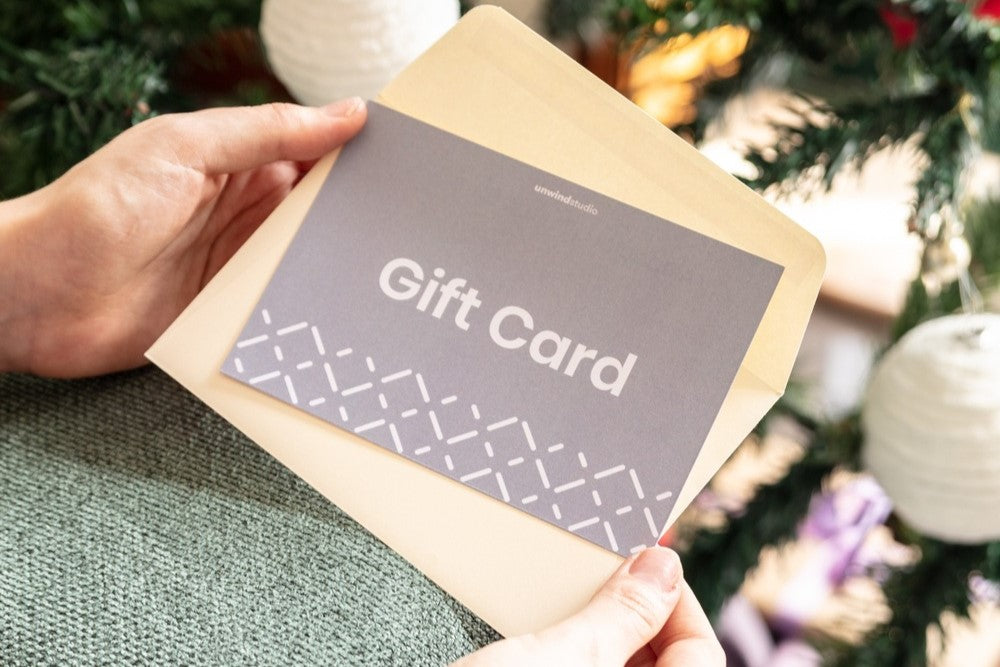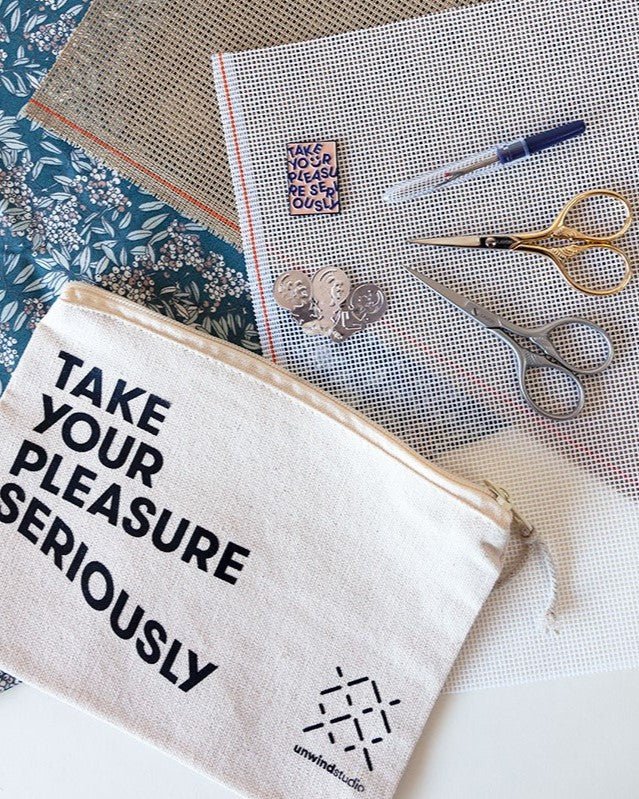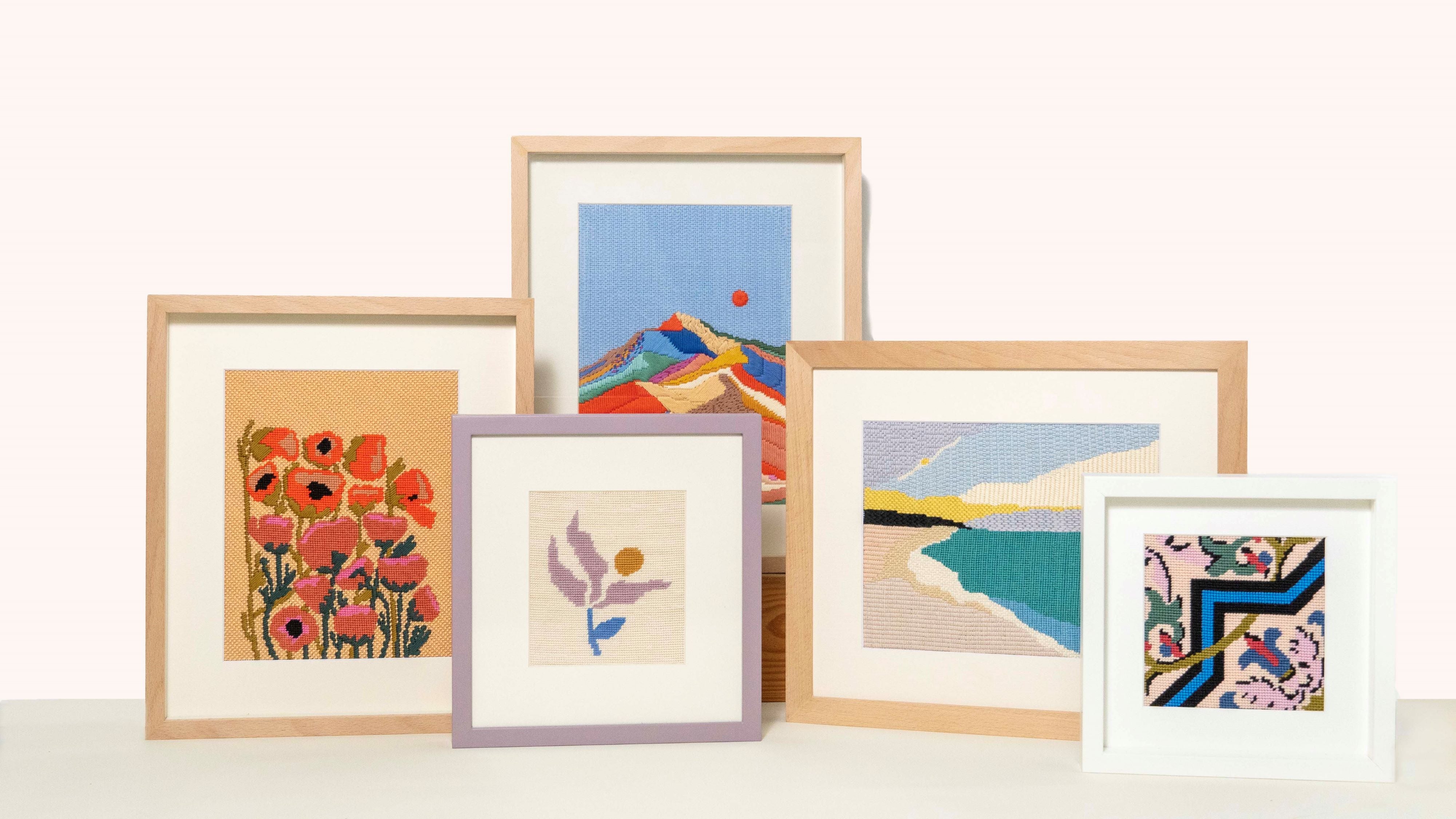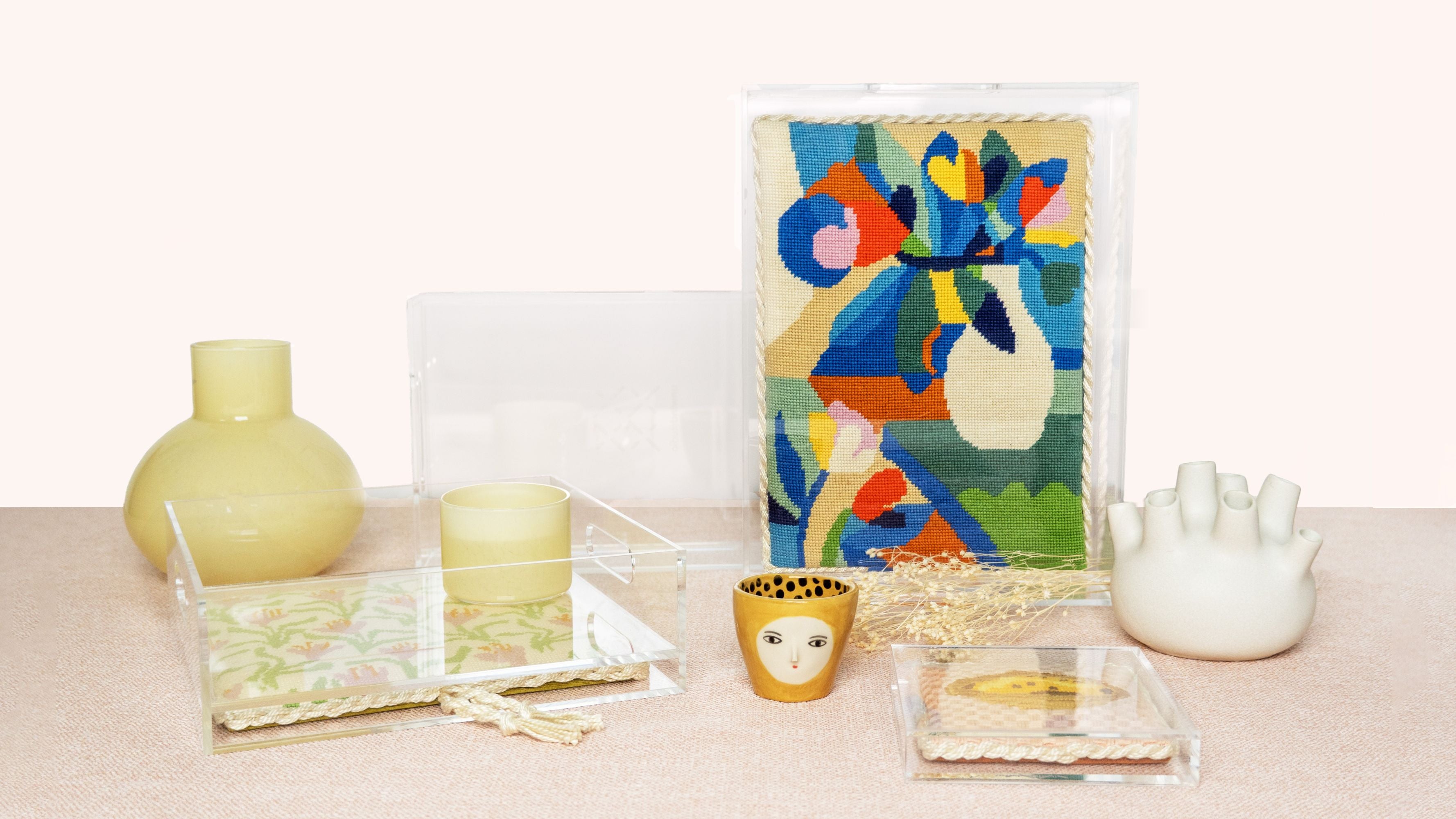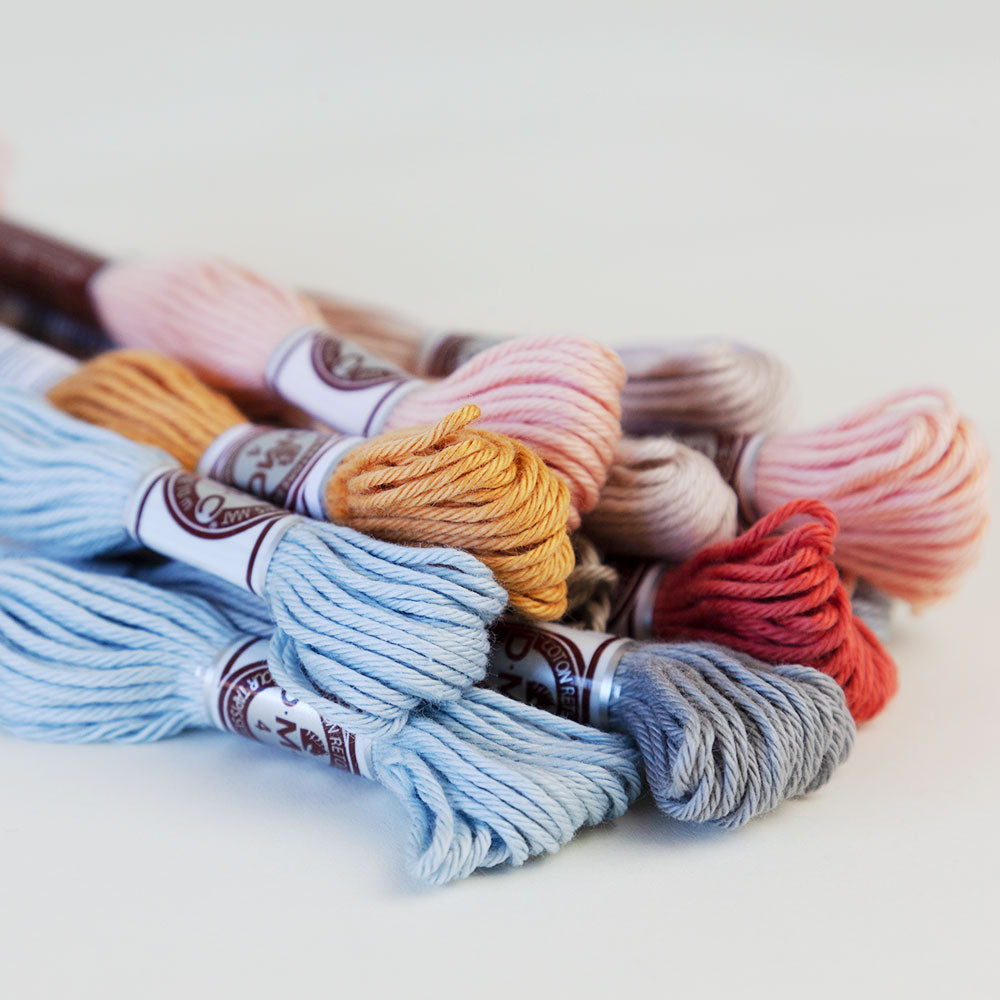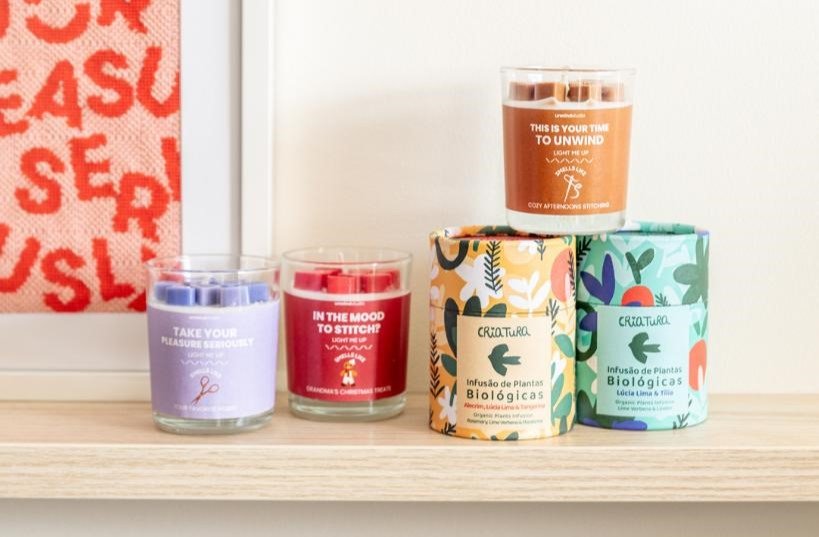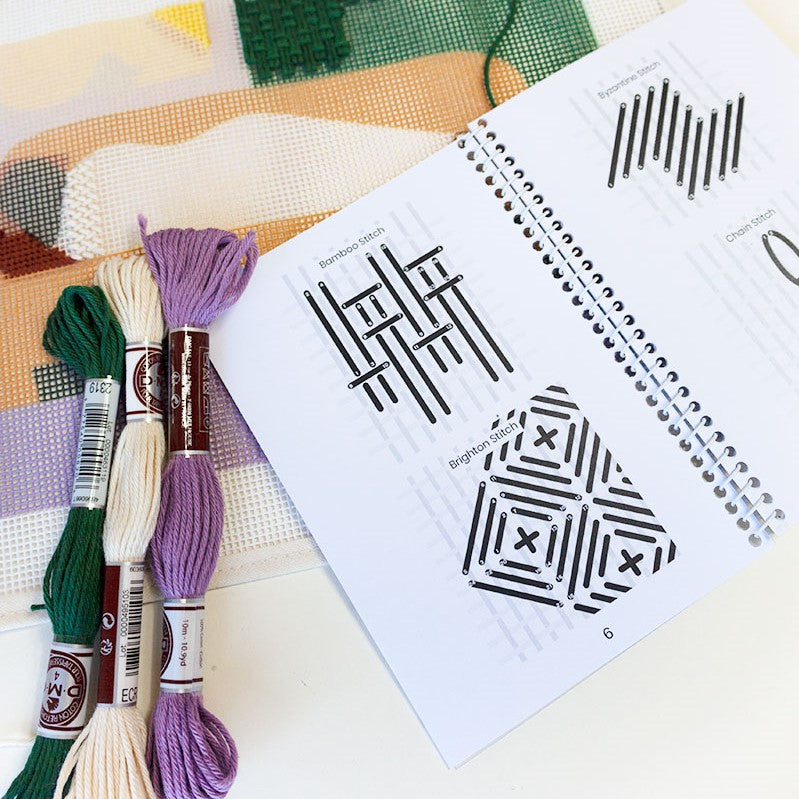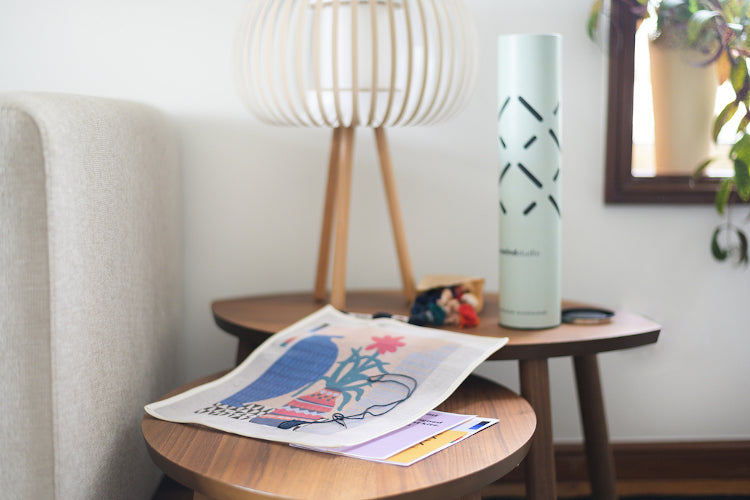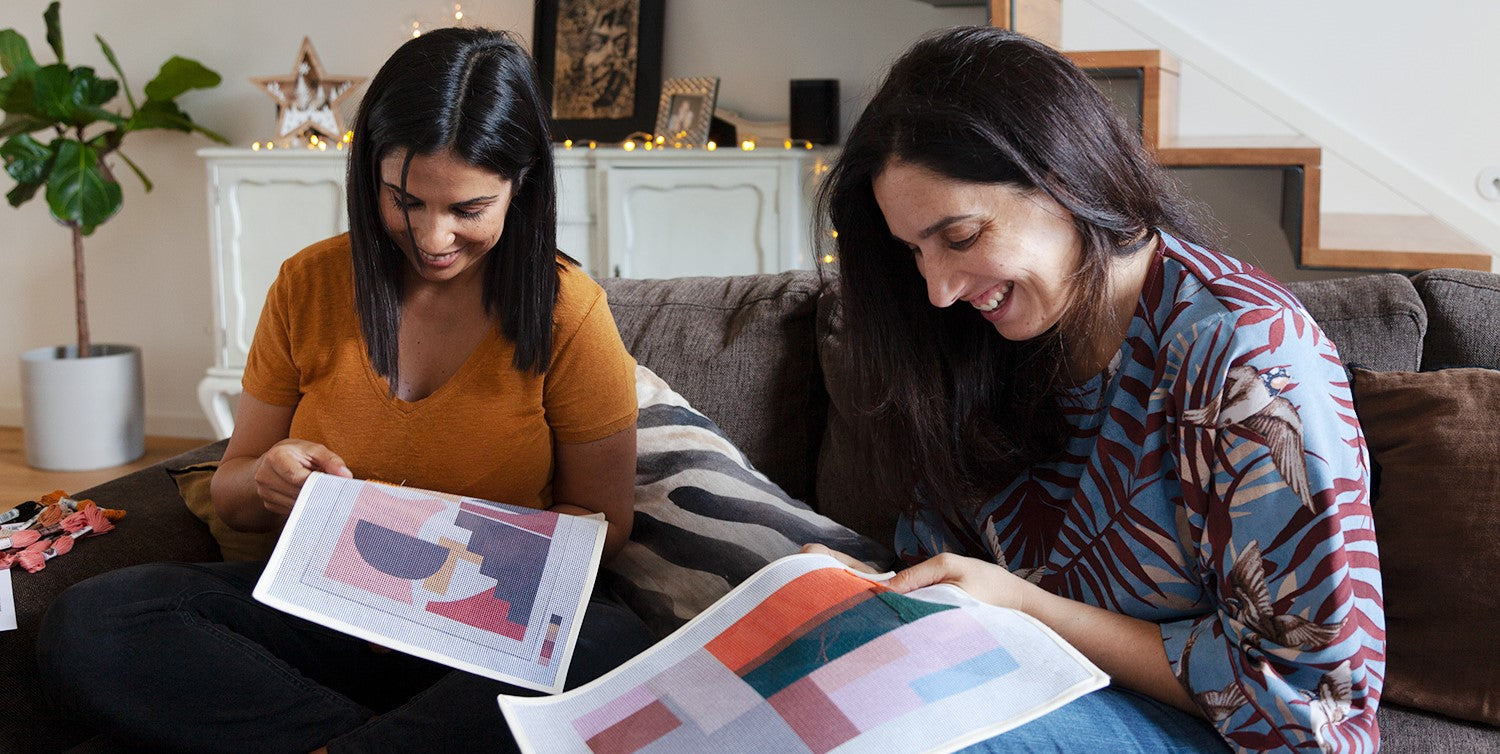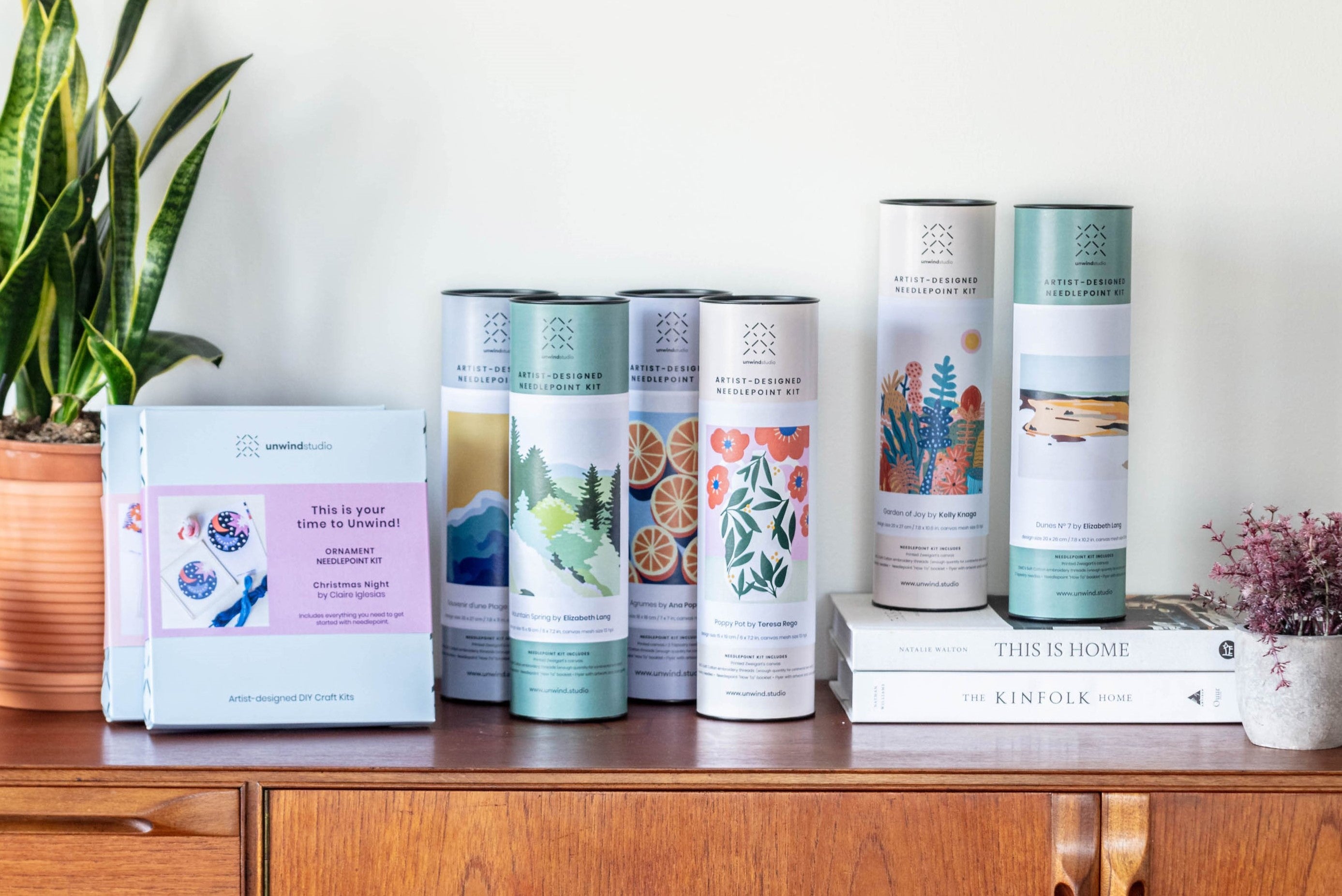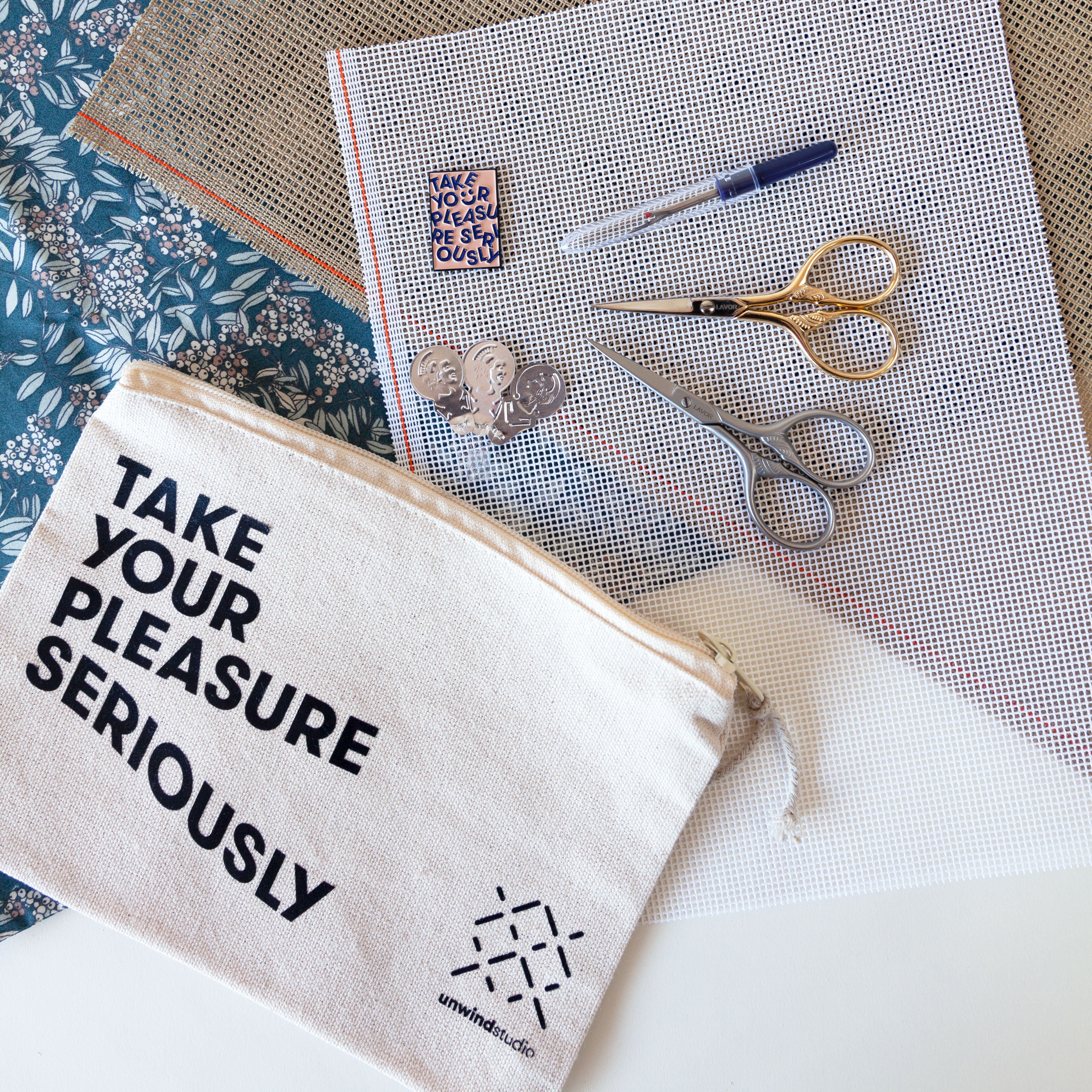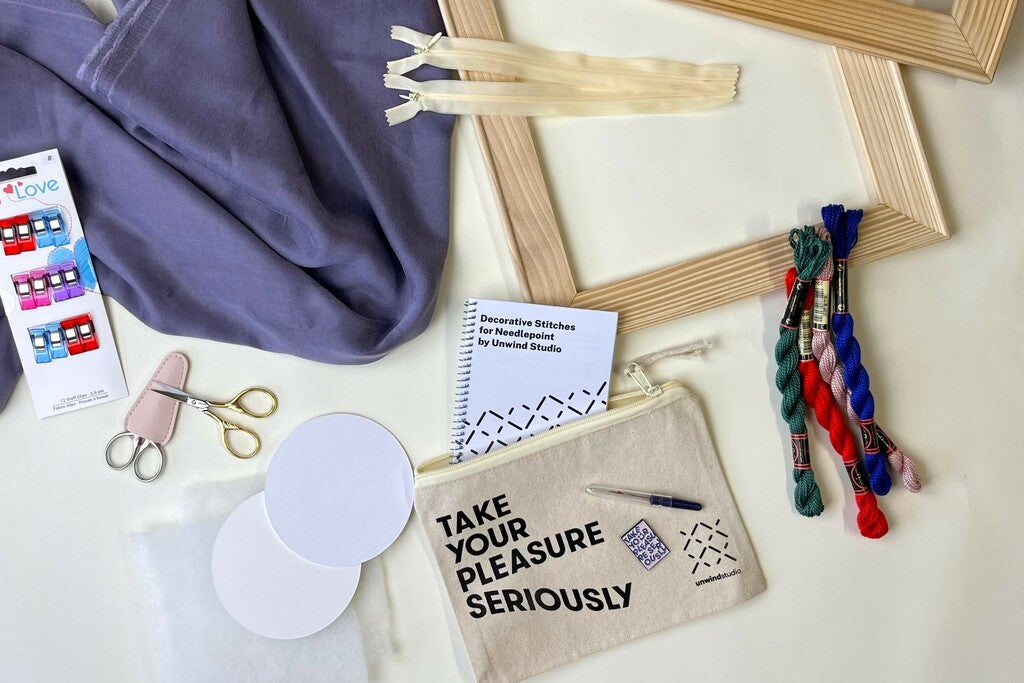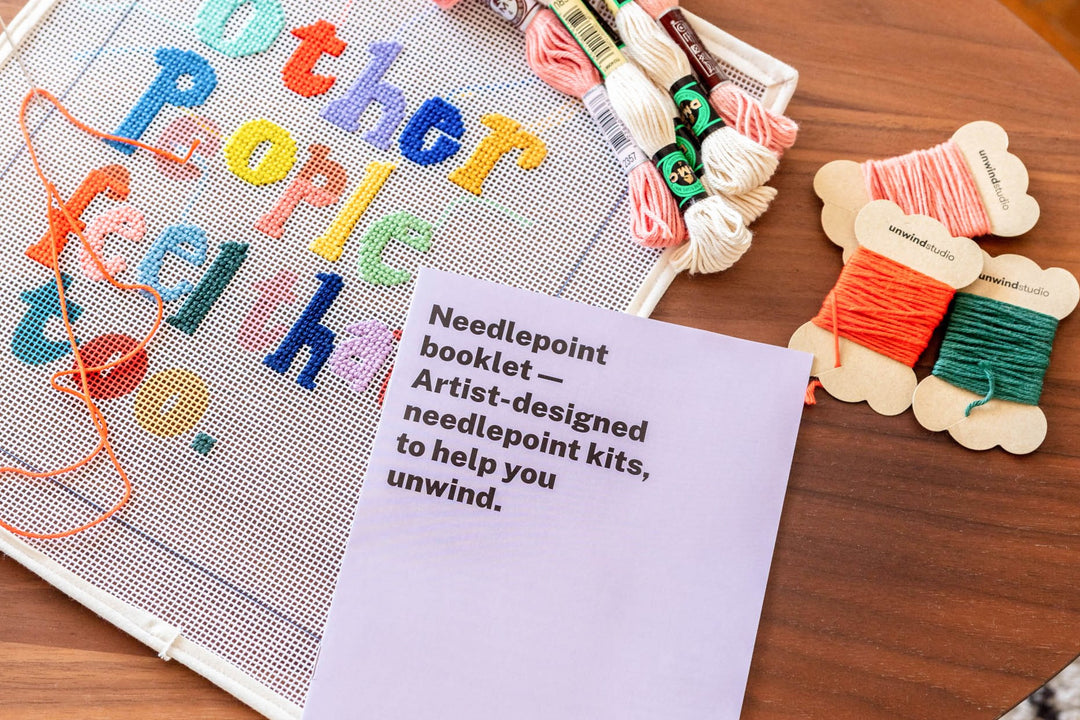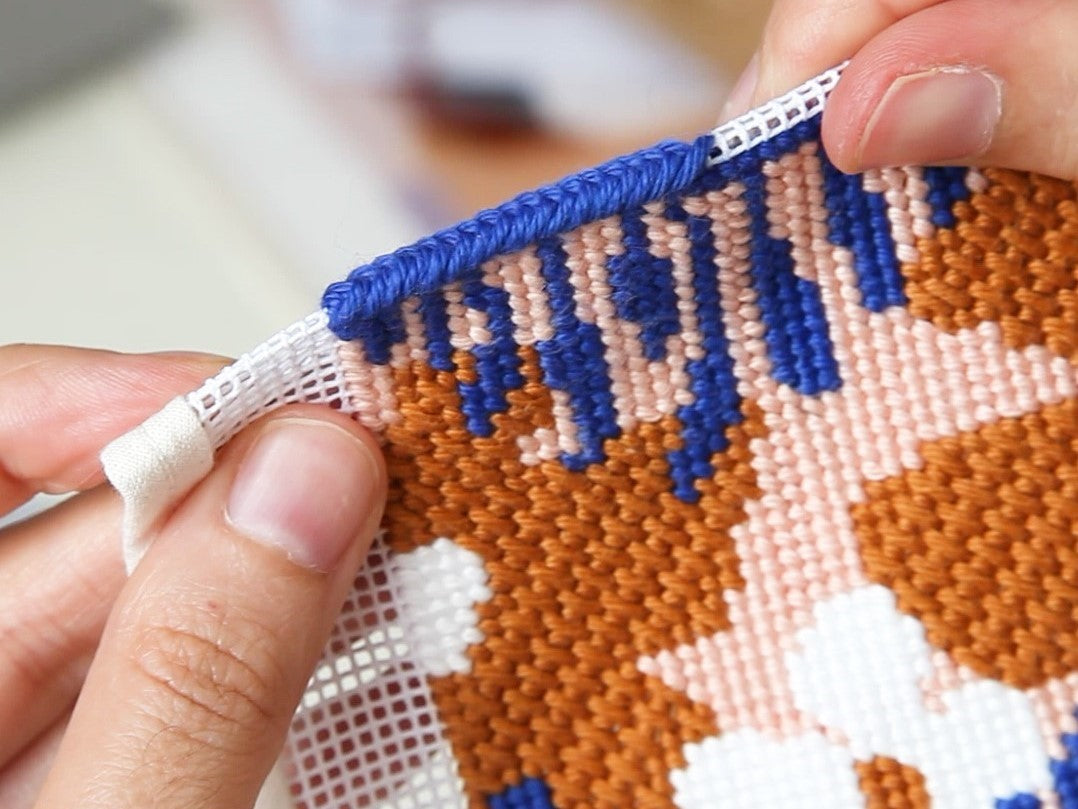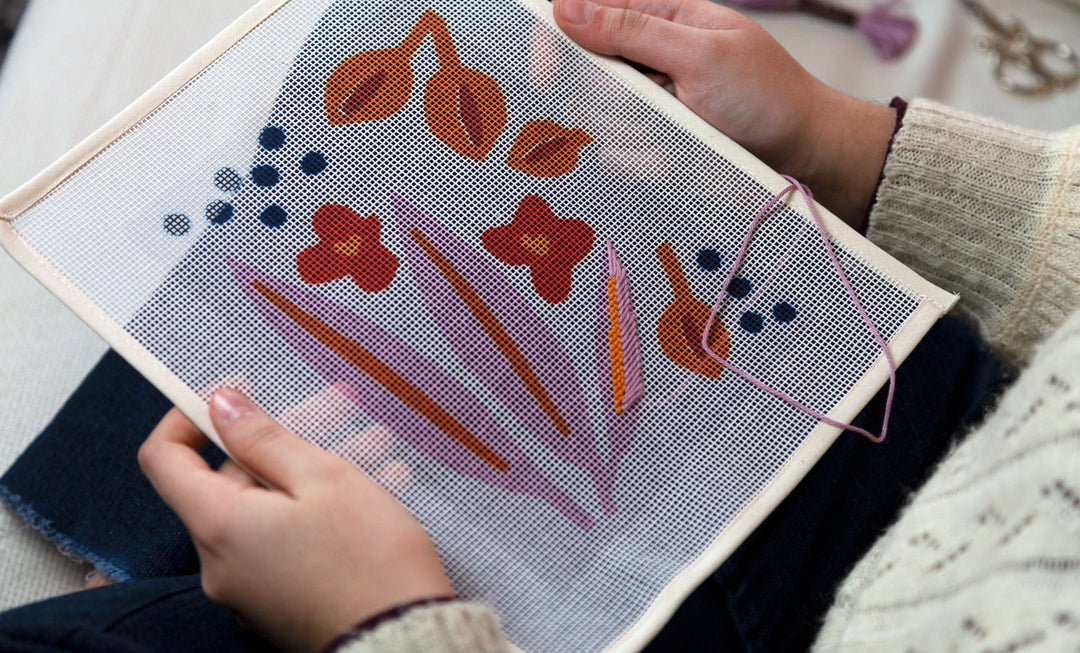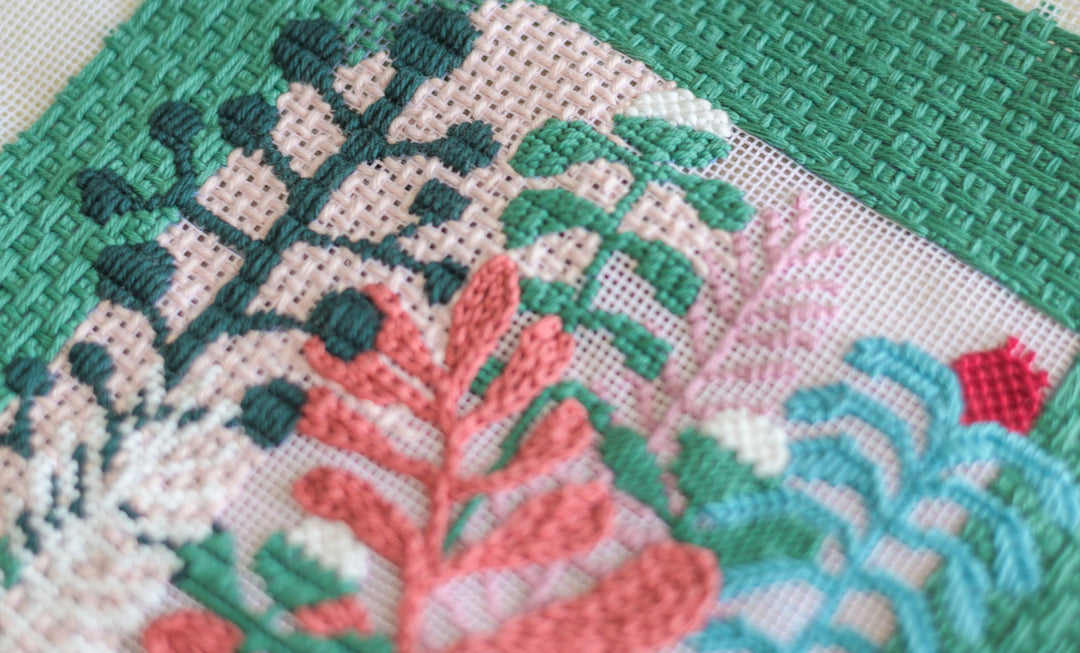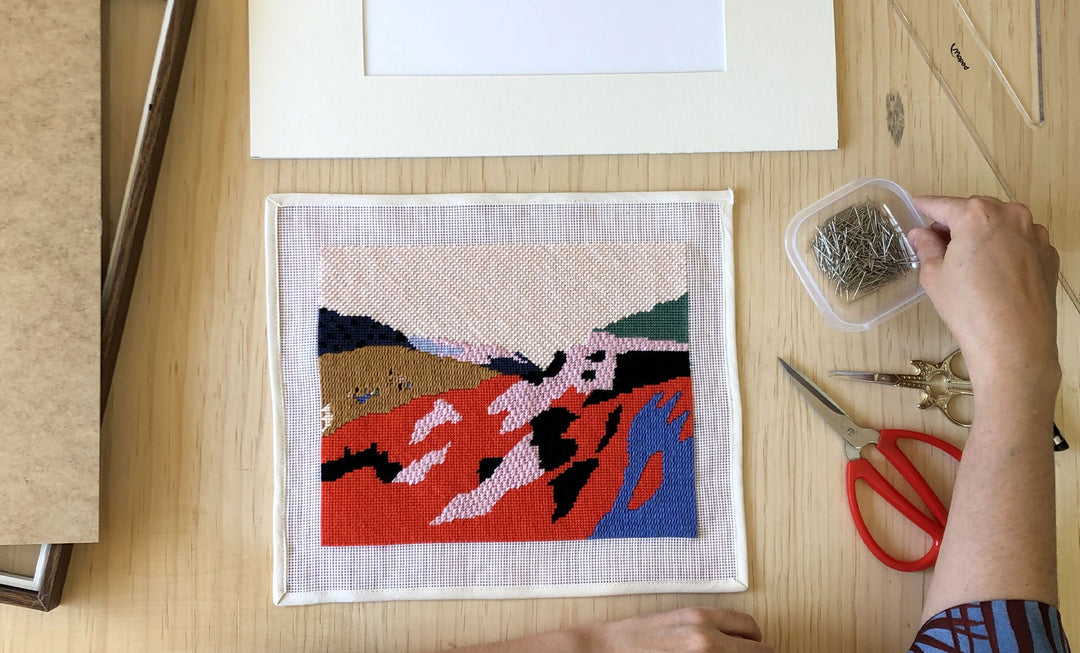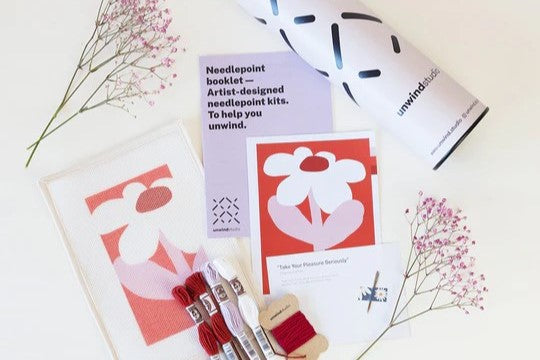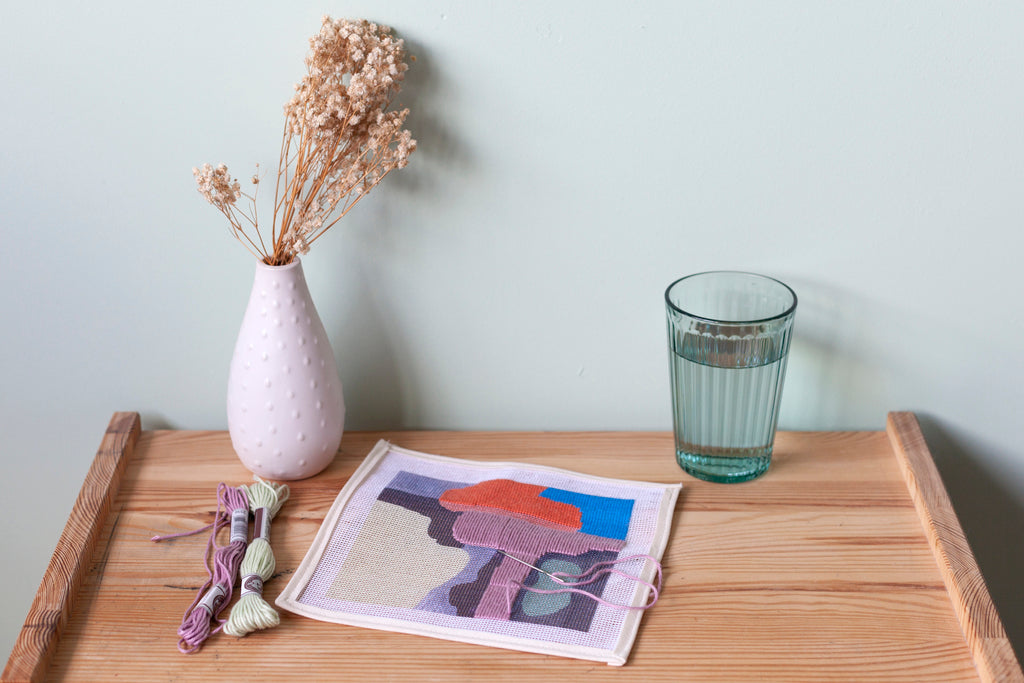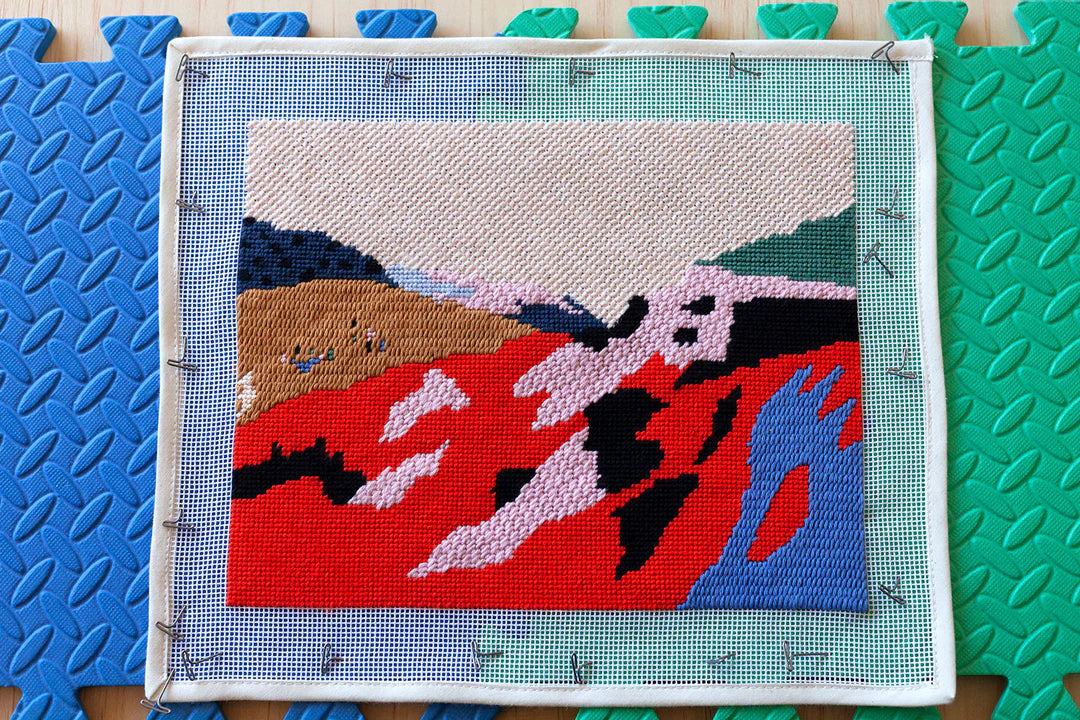In this blog post we will delve into the main tools and accessories used in needlepoint, what they look like and how they work.
Tapestry needles
The type of needle used in needlepoint is a tapestry needle, with a blunt point, and a big eyelet, so it allows for thicker threads like wool to fit through. The needles we use with our kits are the John James Tapestry Needles nº18.

Threads
There are many types of threads that can be used for needlepoint, like cotton, silk, wool, acrylic, etc. The most common are cotton, wool and silk and some of the most used brands are Planet Earth Fiber, Rainbow Gallery, Appletons and DMC.
 Tapestry wool by Appletons and Soft Cotton (Retors Mat) by DMC
Tapestry wool by Appletons and Soft Cotton (Retors Mat) by DMC
DMC Soft Cotton is a light and malleable thread, with a soft texture and matte finnish. It is very versatile and easy to use. This is the type of thread that we use in most of our kits, because it offers a big range of colors to choose from, and we love the soft finish, and how easy it is to stitch with.
Appletons Tapestry Wool is a sturdier thread, with more texture. It has a very durable finish, perfect for wearable projects, and for stitching during the colder months.
These are some of the threads we use in our needlepoint kits. Both of them come in a big variety of colors, and are premium quality!
Canvas
Like the threads, there are many canvas options for needlepoint. As long as it is an open canvas (it has holes), it can have many different mesh sizes/ hpi (holes per inch), dimensions and even colors. Another variant is how the lines of the canvas are intertwined. It can be in the royal or interlocked variation.
HPI (holes per inch): The hpi or mesh count of a canvas refers to the number or holes in a line, in the measurement of an inch. This dictates the amount of holes a canvas has, and therefore, the size of the stitches (and the space in between them). The most common mesh sizes available are 10, 12, 13, 14 and 18 hpi.
Royal: This is a type of canvas with a mesh of single vertical and horizontal threads, that are layed over or under each other.
Interlock: This is a type of canvas with a single horizontal thread wrapped by two vertical threads, 'locking' the mesh at intersections. This is the type of canvas that we use in most of our needlepoint kits! We love how it performs when stitched, and how resistant it is.
The canvases can also be mono or double, meaning the mesh is made of one or two threads on each direction.
Browse the different types of blank needlepoint canvases that we sell here!
Other Tools and Accessories
Here are some other needlepoint tools and accessories that are useful when practicing this craft. Browse our Needlepoint Accessories collection to find some of these items:
Embroidery Scissors
Sharp embroidery scissors are an essential tool in needlepoint. Their small, precise blades make it easy to cut threads cleanly and close to your work without damaging the canvas. Look for scissors with a fine point and comfortable grip.
Stretcher Frame
A needlepoint frame helps keep your canvas taut and maintains even tension while stitching, ensuring a neat, professional finish. Frames come in different types such as scroll frames, stretcher bars, and Q-snaps. A frame also helps prevent the canvas from warping, making it easier to handle larger projects.
You can read more about doing needlepoint with or without a frame on our blog post about it!
Needle Threader
A needle threader is a small but invaluable tool that helps guide threads through the needle's eyelet, especially when working with thicker or more stubborn threads. This tool is particularly useful if you struggle with threading by hand.
Needle Minder
A needle minder is a decorative magnetic accessory that holds your needle securely when you're not stitching. Simply place the magnetic pin on your canvas, and you’ll never lose your needle again. It’s a stylish yet practical tool that saves you time searching for your needle!
Pins and Clips
Pins and clips are versatile accessories that serve many purposes in needlepoint. You can use them to secure excess canvas or hold fabric in place when finishing your piece. They help keep your work tidy and organized.
Seam Ripper (Stitch Unpicker)
A seam ripper, also known as a stitch unpicker, is a must-have tool for any needlepoint enthusiast. Mistakes happen, and a seam ripper helps you quickly and neatly remove stitches without damaging the canvas or surrounding threads. Its sharp point and small blade make it easy to cut and pull out unwanted stitches, allowing you to correct errors efficiently.
Iron
An iron is a key tool when blocking your finished needlepoint project. Using the steam function, you can soften the fibers, making it easier to smooth out wrinkles and stretch the canvas to its final shape. A well-blocked piece will look more polished and professional.
Read more about needlepoint blocking on our blog.
Having the right tools can make all the difference in your needlepoint journey. From the basics like needles and canvas to more specialized tools like threaders, needle minders, and stretcher frames, each accessory plays a crucial role in making your stitching experience smoother and more enjoyable.
Browse our full collection of needlepoint accessories and discover the perfect tools to complement your next project!



